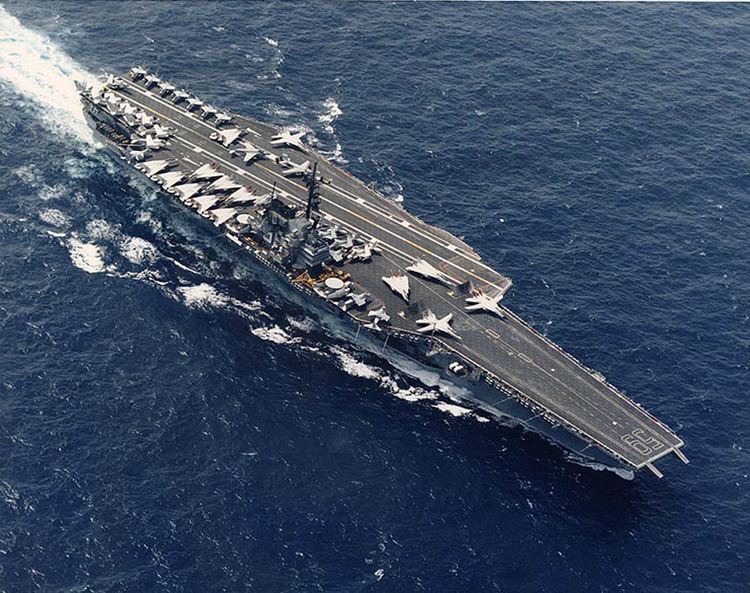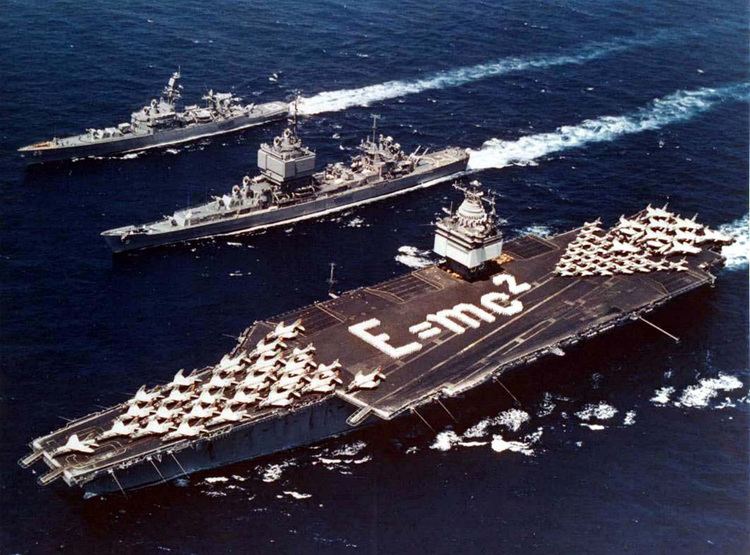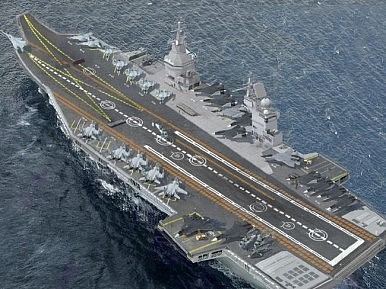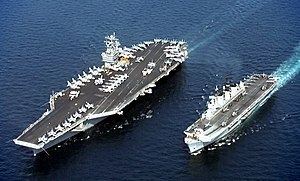 | ||
National geographic 2015 uss ronald reagan 21st century supercarrier
Supercarrier is an unofficial descriptive term for the largest type of aircraft carrier, typically those displacing over 70,000 short tons (64,000 metric tons). Supercarriers are the largest warships ever built, larger than the largest battleship class laid down by any country. The United States Navy has ten active supercarriers as of 2015, while the United Kingdom will have two—the Queen Elizabeth-class aircraft carriers Queen Elizabeth and the second Prince of Wales which are currently being built, and are expected to enter service in 2018.
Contents
- National geographic 2015 uss ronald reagan 21st century supercarrier
- History
- Alternatives
- Classes
- Cancelled
- Future
- References

Outside the US, there are more light carriers closer to 30,000 tons, such as Italy's Cavour. A few countries operate medium-sized fleet carriers of around 40,000 tons, such as the French aircraft carrier Charles de Gaulle and the Indian Navy aircraft carrier INS Vikramaditya .

History

The first ship to be described by The New York Times as a supercarrier was HMS Ark Royal in 1938, with a length of 685 feet (209 m) and a displacement of 22,000 tons, designed to carry 72 aircraft. In 1943 the superlative was transferred to the 45,000-ton Midway-class carriers as a step-up from the 27,000-ton Essex class. The Japanese aircraft carrier Shinano, launched in 1944, was the first aircraft carrier with a standard displacement of over 65,000 metric tons.

The post-war standard for supercarriers was set by the proposed USS United States and USS Forrestal. Forrestal displaced 60,000 tons standard and 78,000 tons in deep load and is considered the first operational supercarrier in the present-day sense, as used by the US press. The similar-sized United States would have been in service earlier, had it been completed; its cancellation triggered the "Revolt of the Admirals".
The Soviet Union's 85,000-ton nuclear carrier Ulyanovsk, closely comparable in size to earlier American supercarriers, was 40% complete when it and a follow-on vessel were canceled in 1991 during post-Cold War funding cuts.
As of 2015 the United Kingdom has one 70,000-ton Queen Elizabeth-class carrier being fitted out, and another under construction, and France had until 2013 been considering building one vessel based on the same design. These ships are referred to as supercarriers by British legislators and the news media. The two Queen Elizabeth-class carriers will provide the Royal Navy with capabilities much closer to United States Navy carriers than the Invincible-class vessels retired in 2014. Giving evidence to the House of Commons Defence Committee in 2004, the First Sea Lord Alan West, Baron West of Spithead explained that interoperability with the United States Navy was as much a deciding factor of the size of the carriers as the firepower of the carrier's airwing:
I have talked with the CNO (Chief of Naval Operations) in America. He is very keen for us to get these because he sees us slotting in with his carrier groups. He really wants us to have these, but he wants us to have the same sort of clout as one of their carriers.
Future plans for supercarriers in the United States involve the construction of the U.S. Navy's next generation of carriers, the Gerald R. Ford class, which will have a 100,000-ton displacement.
Alternatives
The United States maintains ten of these ships, with each typically operating 45 McDonnell Douglas F/A-18 Hornet aircraft for traditional fighter, attack and electronic countermeasure roles with twelve Sikorsky SH-60 Seahawk helicopters, four Northrop Grumman E-2 Hawkeye airborne early warning and control aircraft and two Grumman C-2 Greyhound carrier onboard delivery aircraft. Given carriers' vulnerability in combat and to peacetime asymmetrical warfare attacks, the use of more and smaller carriers rather than large vessels has been suggested over the years, such as Elmo Zumwalt's Sea Control Ship, and carriers the size of USS America carrying STOVL aircraft and Unmanned combat aerial vehicle. However, supercarrier advocates consider them to be more cost-effective than a larger number of smaller carriers. An American carrier strike group costs $25 million per week for routine operations, rising to $40 million during combat operations.
The mobile offshore base (MOB) is an extension of the supercarrier concept, a modular floating military base as large as 10 aircraft carriers. If realized, it could be moved anywhere throughout the world's oceans, obviating the need to seek permission from allied nations for use of land bases. The concept was studied in the 1990s by the U.S. government but was abandoned in 2001 as cost prohibitive.
